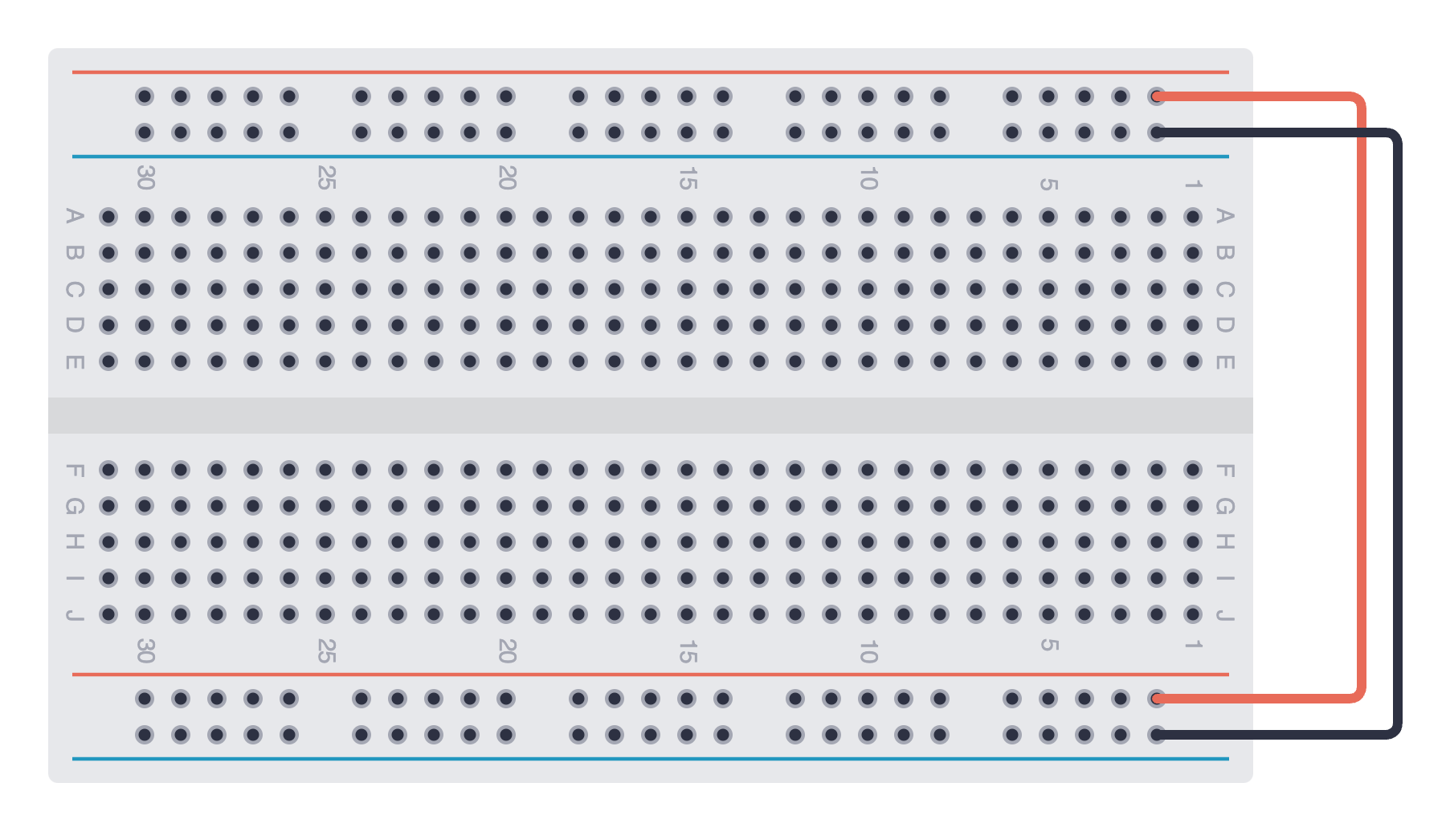Basic Electrical Skills
Before we learn about connecting components to our Arduino, we need to be familiar with some basic electrical engineering concepts.
What is a circuit?
In electronics, a circuit is a path which allows charge to flow from a power source and back to the source, hence completing the loop.
Voltage, current and resistance
But what is electricity? Electricity is the flow of electrical charge. The three basic principles of electricity - voltage (V or E), current (I), and resistance (R) - can be understood in reference to the charge.
- Voltage refers to the difference in charge between two points. This is why voltage is commonly referred to as potential difference.
- Current is the rate of flow of charge.
- Resistance is a measure of opposition to the flow of charge.
The water analogy is an effective way to understand these concepts.
- Water flow represents current.
- Water pressure represents voltage.
- Any resistance to the flow of water represents resistance.
Watch this video to grasp this concept.
Ohm's Law
Ohm's Law is a fundamental law in electricity which describes the relationship between voltage, current and resistance. This relationship can be expressed using the formula V = IR.
Understanding the breadboard

- Terminal strips are horizontal rows across the breadboard which are electrically connected.
- Power rails are vertical columns that are found on the sides of the breadboard. The power rails allow us to have easy access to power and ground when building more complicated circuits.
- The rail marked with red lines represents positive connections.
- The rail marked with blue/black lines represents ground connections.
- The center groove, or ravine, runs down the center of the breadboard, and allows us to easily fit components which have two rows of pins.
We can connect the power rails on either side of the breadboard. Ensure you don't mix up the positive and negative rails!

Assignment
- Watch this video to understand Ohm's Law better.
Next Steps
This section includes links to help you dive deeper into the topics from this lesson. It's optional, so don't worry if you choose to skip it.
- Check out this video to solidify these concepts.